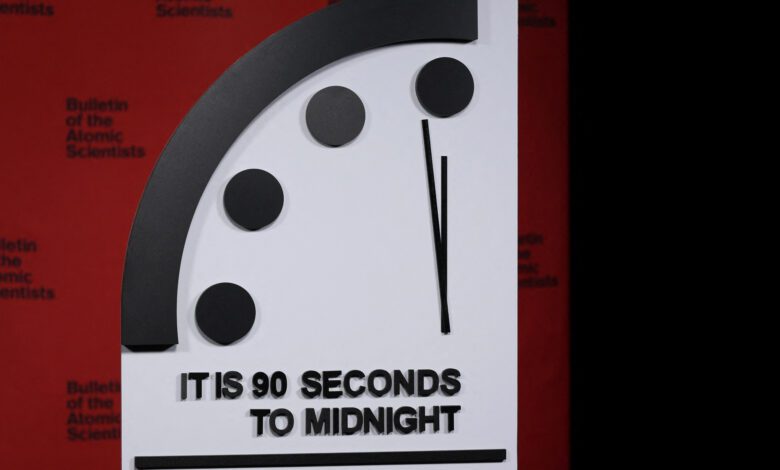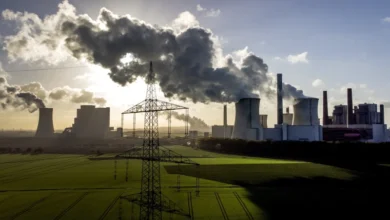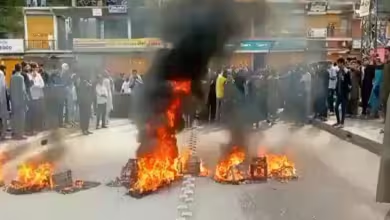‘Doomsday Clock’ is ticking down to threats of nuclear war, AI and climate disasters
When the clock was initially designed, the biggest threat came from nuclear bombs

Atomic experts on Tuesday kept their “Doomsday Clock” set as near to midnight as ever before, citing Russia’s nuclear weapons operations during its invasion of Ukraine, nuclear-armed Israel’s Gaza assault, and deteriorating climate change as factors raising the probability of global disaster.
The Bulletin of Atomic Scientists, as it did last year, set the clock to 90 seconds to midnight, the theoretical point of annihilation. Scientists established the clock based on “existential” hazards to Earth and its inhabitants, including the nuclear threat, climate change, and disruptive technologies like artificial intelligence and new biotechnology.
“Conflict hot spots around the world carry the threat of nuclear escalation, climate change is already causing death and destruction, and disruptive technologies like AI and biological research advance faster than their safeguards,” Rachel Bronson, the bulletin’s president and CEO, told Reuters, adding that staying the same as last year is “not an indication that the world is stable.”
The clock was designed in the 90s
The clock was built in 1947 by a Chicago-based organisation to warn the public about how close humanity is to destroying the planet.
Russia’s large-scale invasion of Ukraine, which will mark its second anniversary next month, has heightened relations with the West to their most perilous levels since the Cold War.
“A durable end to Russia’s war in Ukraine seems distant, and the use of nuclear weapons by Russia in that conflict remains a serious possibility. In the past year Russia has sent numerous worrying nuclear signals,” Bronson added.
Bronson highlighted Russian President Vladimir Putin’s decision in February 2023 to stop Russian participation in the New START deal with the United States, which reduced the two countries’ strategic nuclear arsenals. The United States and Russia together possess over 90% of the world’s nuclear weapons, enough to destroy the earth several times over.
Bronson also noted Putin’s March 2023 declaration that Russia will deploy tactical nuclear weapons in Belarus, as well as the Russian parliament’s October 2023 enactment of a legislation withdrawing ratification of the worldwide treaty prohibiting nuclear weapons testing. Last year, Russian expert Sergei Karaganov expressed the necessity to threaten nuclear attacks in Europe in order to terrify and “sober up” Moscow’s adversaries.
Israel has been at war with Hamas since the Palestinian Islamist organisation, based in Gaza, initiated operations in southern Israel in October 2023, killing over 1,200 people, according to Israeli figures. More than 25,000 Palestinians have been killed by Israeli military attacks, according to Gaza’s health officials. Bronson expressed concern that, “As a nuclear state, Israel’s actions are clearly relevant to the Doomsday Clock discussion. Of particular worry is that the conflict might escalate more broadly in the region creating a larger conventional war and drawing in more nuclear powers or near-nuclear powers.”
When the clock was initially designed, the biggest threat came from nuclear bombs. Climate change was evaluated as a factor for the first time in 2007.
“The world in 2023 entered into uncharted territory as it suffered its hottest year on record and global greenhouse gas emissions continued to rise,” he added. “Both global and North Atlantic sea-surface temperatures broke records, and Antarctic sea ice reached its lowest daily extent since the advent of satellite data.”
Bronson stated that 2023 was a record-breaking year for renewable energy, with $1.7 trillion in new investments. This was offset by roughly $1 trillion in fossil fuel investments, according to Bronson.
“This illustrates that while promising, current efforts to reduce greenhouse gas emissions are grossly insufficient to avoid dangerous human and economic impacts from climate change, which disproportionately affect the poorest people in the world,” Bronson said in a statement.
In 1945, experts such as Albert Einstein and J. Robert Oppenheimer formed the Bulletin of the Atomic experts. It sets the clock on a yearly basis, with the help of a board of nuclear technology and climate science specialists. The clock was initially displayed during the Cold War, which followed World War II.
You might also be interested in – India backs UN resolution demanding Gaza ceasefire



